Our Evaluation Evolution
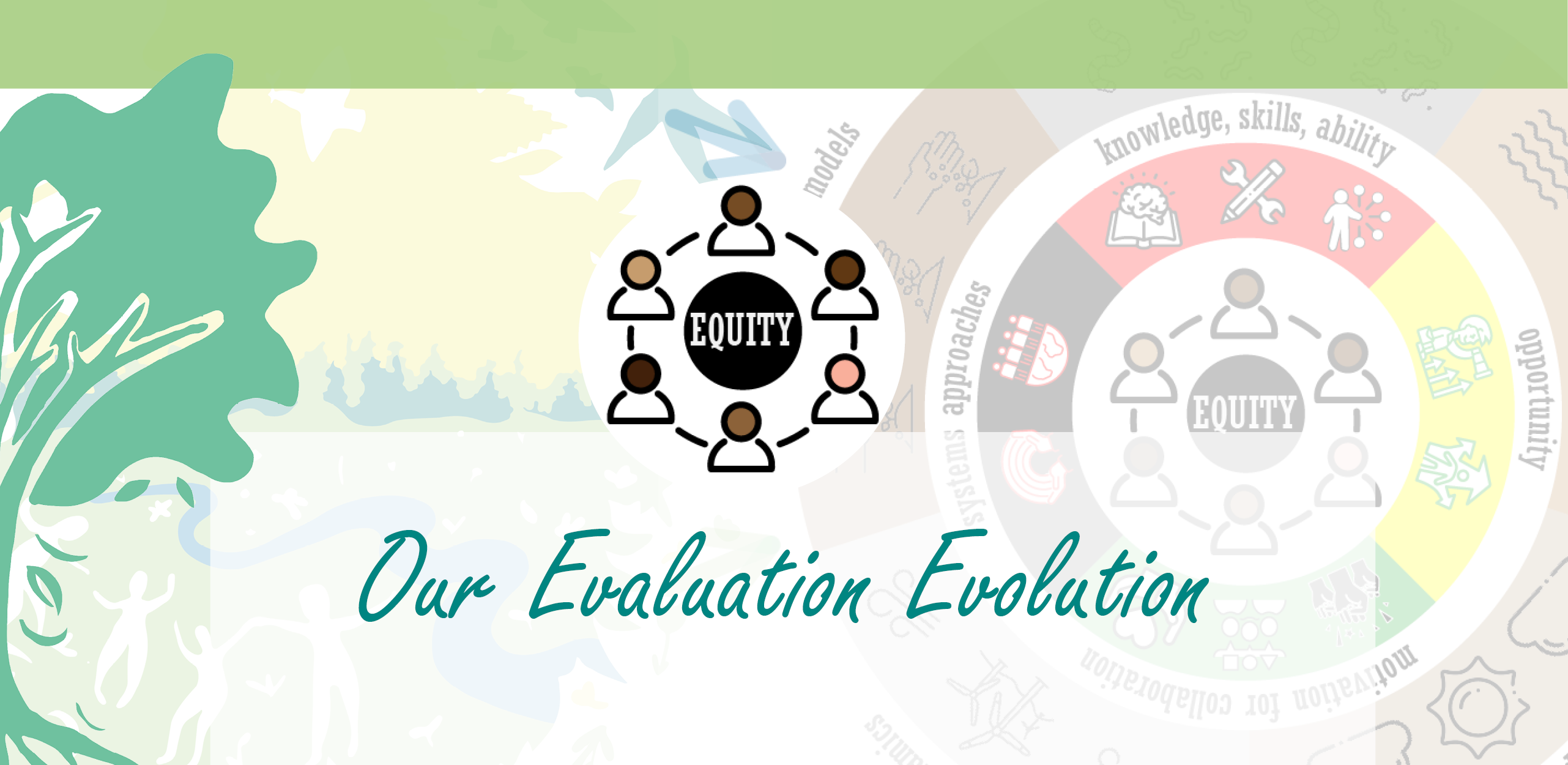
Inspiring Communities has a long deep history entwining monitoring, learning and evaluation throughout our work. Nancy Carter is the evaluator who has been working with us for the last few years as we have evolved our approach to evaluation. Nancy explored our culture of learning and evaluation in a blog series using the metaphor of Bridges: read that series starting here.
We have emerged from the last year with a set of theoretical models to guide our work, and more planned. And if you feel that “models” sounds too academic to be useful, here are some concrete ways these models have been used to date.
Evaluation Framework
As we embed evaluation, reflection and learning in everyone’s role, this framework, provided by Nancy Carter, was the basis for a robust discussion on evaluation to ensure everyone had a common understanding of what types of evaluation would be needed at different project stages and for particular audiences. We have since used this model in interviews for new staff, again to establish common understanding and language and to help people new to the field understand where their experience placed them in our framework.
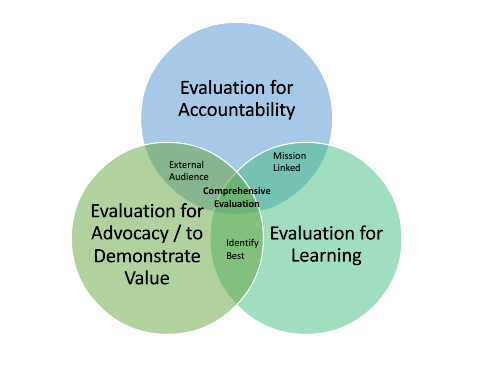
IC Logic Model
A logic model describes how your work is structured. It’s almost like a Strategic Plan for the organization.
One of the outcomes of our Innoweave Impact and Strategic Clarity Coaching sessions was an opportunity to refine and test a new logic model and theory of change for our whole organization. These both needed to be robust and flexible enough to allow individual initiatives and projects to see themselves in them. The Logic Model has impacted how our learning report is structured and has helped staff determine how to share new project proposals. It was also used as the basis for our internal Annual Monitoring & Evaluation Report.
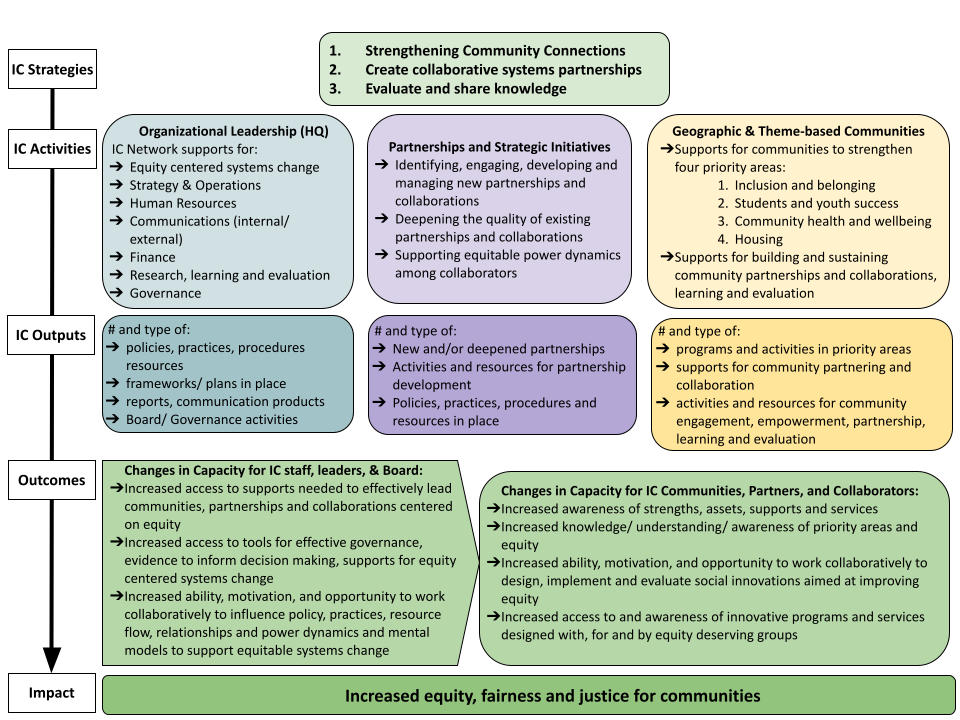
IC Theory of Change
A Theory of Change is “a comprehensive description and illustration of how and why a desired change is expected to happen in a particular context.”
Our Theory of Change is our hypothesis for experimenting. It shows what we plan to do, what our assumptions are, and what we expect to happen. We use it in developing programs. When entering collaborative relationships, it can help us identify what role we should play and what we need to have happen in the project to make it an aligned activity for us. For instance, checking back on this Theory of Change helped us identify what pieces of the currently-being-developed project with CMHA-NS were essential to us, and which parts we felt it important to hold.
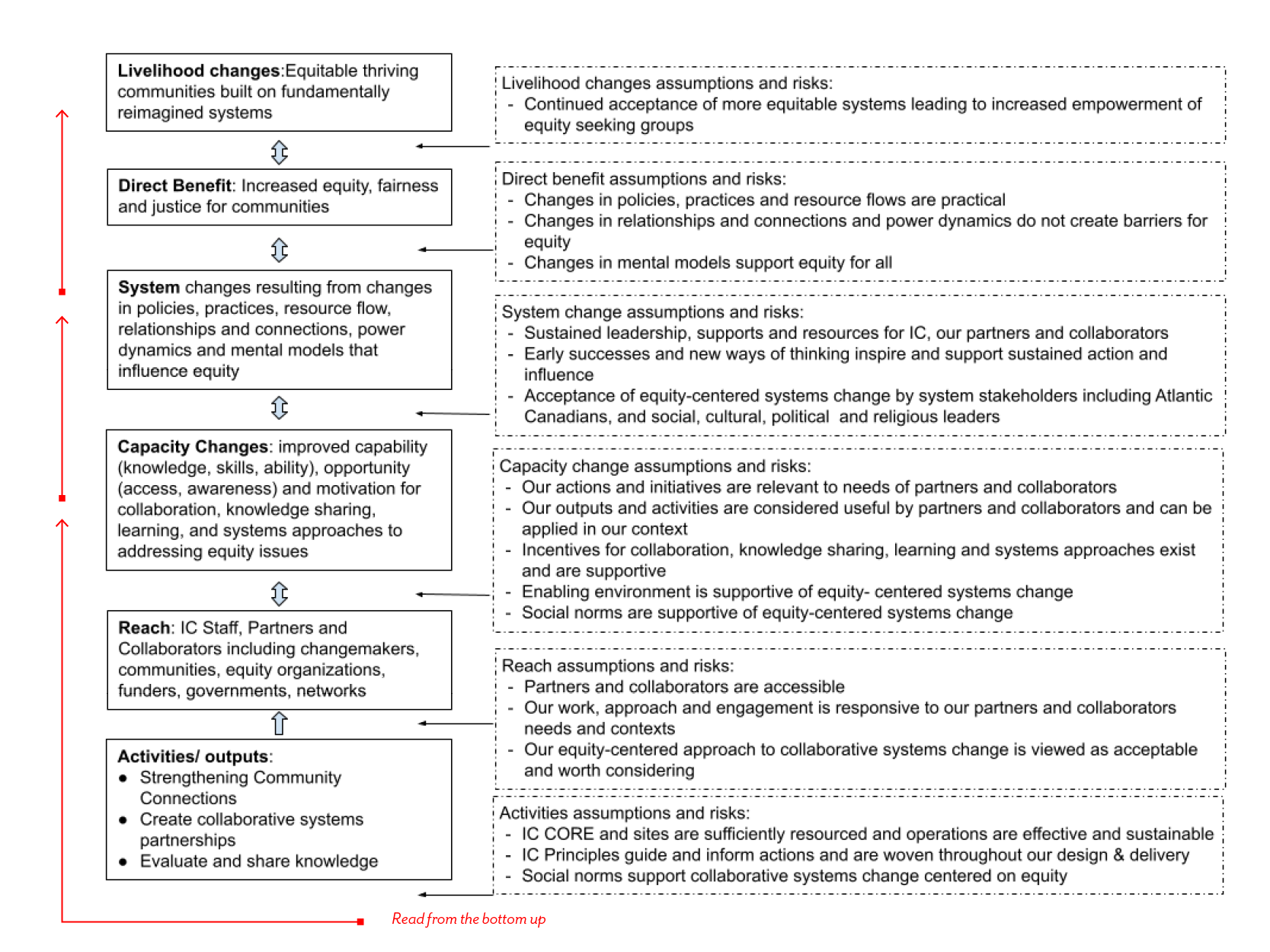
We have recently developed a simpler, more visual representation of this Theory:
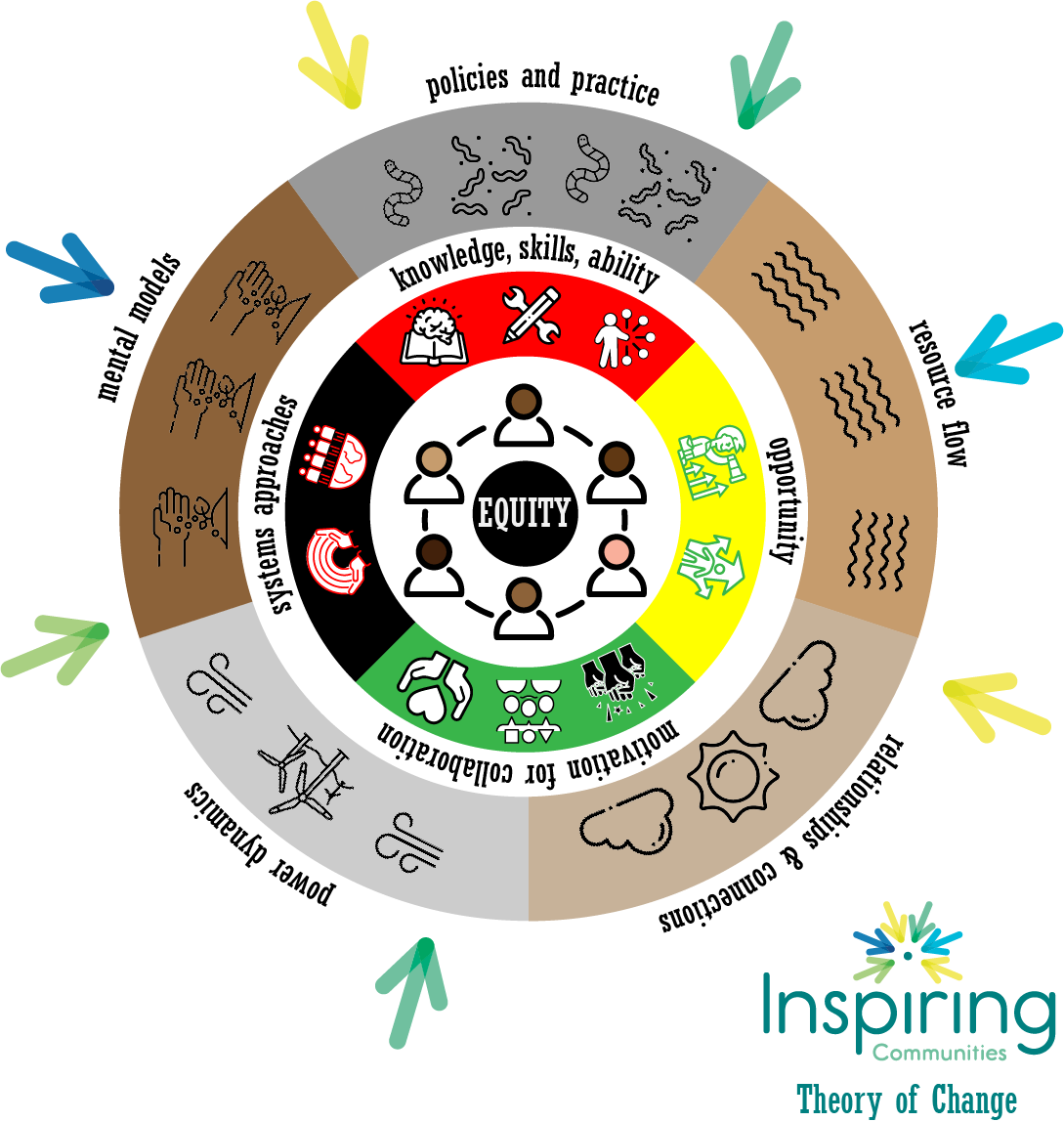
With equity at the center, we focus on building capacity in individuals and groups, and also apply influence and pressure to leverage change in the conditions for systems change. Another way of saying this is: “Our strategy for systems transformation across the region is based on bringing diverse voices to the decision-making tables, creating the capacity to act, and fostering a culture of collaboration.”
These are the icons used in creating the above visualization:
- Wave icons created by BomSymbols – Flaticon
- Wind energy icons created by Culmbio – Flaticon
- Worm icons created by Freepik – Flaticon
- Bacteria icons created by geotatah – Flaticon
- Love icons created by Freepik – Flaticon
- Motivation icons created by ToZ Icon – Flaticon
- Cloud icons created by Freepik – Flaticon
- Choice icons created by MindWorlds – Flaticon
- Abilities icons created by Adrien Coquet – Flaticon
- Skill icons created by Freepik – Flaticon
- Wind icons created by Vitaly Gorbachev – Flaticon
- Knowledge icons created by Smashicons – Flaticon
- Seeds icons created by Freepik – Flaticon
- Sol icons created by Freepik – Flaticon
- Opportunity icons created by Eucalyp – Flaticon
Share this:
Comments are closed